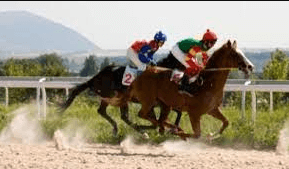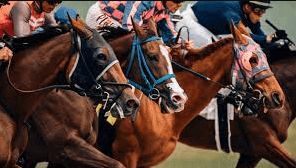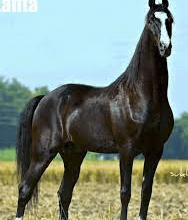What Are The Different Horse Racing Surfaces Used In Thoroughbred Racing, Such As Dirt, Turf, And Synthetic Tracks?

In the world of Thoroughbred racing, one fascinating aspect that captures the attention of both enthusiasts and casual spectators alike is the variety of surfaces on which these majestic horses compete.
From the traditional dirt tracks to the lush turf courses, and even the relatively new synthetic tracks, each surface presents its own set of advantages and challenges.
According to a recent study conducted by The Jockey Club, approximately 67% of all races in North America are run on dirt tracks, while 24% take place on turf and the remaining 9% are contested on synthetic surfaces.
The choice of racing surface can significantly impact the outcome of a race and requires careful consideration from trainers, jockeys, and horse owners.
Factors such as weather conditions, track maintenance, horse preferences, and even regional traditions play crucial roles in determining which type of surface is used at different racetracks around the world.
Understanding how these surfaces differ from one another is essential for appreciating the complexity and skill involved in Thoroughbred racing.
In this article, we will explore each type of racing surface – dirt, turf, and synthetic – delving into their unique characteristics as well as examining jockey and trainer strategies for maximizing performance on each surface.
So join us as we embark on this journey through the diverse world of horse racing surfaces to gain a deeper understanding of this beloved sport.
Dirt Tracks
Dirt tracks, which are the most common racing surfaces in thoroughbred racing, offer a traditional and challenging terrain for horses to showcase their speed and stamina. These tracks are typically made of a mixture of clay, sand, and soil, carefully maintained to create optimal track conditions.
The texture and composition of the dirt track can greatly impact the speed of the race. A dry and fast track allows horses to achieve their maximum speed, while a wet or muddy track slows them down due to increased resistance.
Weather conditions play a significant role in the condition of dirt tracks. Rain can soften the surface, making it slower and more tiring for horses as they have to work harder to maintain their pace. On the other hand, hot weather can dry out the track, creating a hard surface that can be tough on horse’s legs.
Trainers and jockeys must carefully consider these factors when preparing for races on dirt tracks in order to optimize their performance and ensure the safety of both horse and rider.
Turf Tracks
Turf tracks, known for their lush and cushioned surface, offer a unique and challenging terrain for Thoroughbred racing. The evolution of turf tracks has seen significant advancements in recent years, with improvements in the quality of grass used and the maintenance techniques employed.
These tracks are typically made up of a mixture of grass varieties that are carefully selected to provide an even and durable surface. Jockeys must adapt their tactics when riding on turf tracks, as the different footing can affect the horse’s speed and stamina. They often need to position their horses strategically to take advantage of changes in ground conditions, such as softer or firmer patches.
Additionally, jockeys need to be mindful of how the weather may impact the track’s performance throughout the race. Overall, turf tracks add another layer of complexity to Thoroughbred racing and require both skillful horsemanship and tactical awareness from jockeys.
Synthetic Tracks
The introduction of synthetic tracks has brought forth a new era in horse racing, symbolizing the industry’s relentless pursuit of innovation and progress.
These artificial surfaces, made from a combination of materials such as sand, fibers, and wax, aim to provide a consistent and safe racing surface for horses.
One of the main advantages of synthetic tracks is their ability to maintain more stable track conditions compared to dirt or turf. Unlike natural surfaces that can become muddy or hard depending on weather conditions, synthetic tracks are designed to offer predictable footing regardless of the weather.
This consistency allows trainers and jockeys to better plan strategies and optimize horse performance. Additionally, synthetic tracks have been found to be less prone to injuries than traditional surfaces due to their shock-absorbing properties.
They also tend to require less maintenance in terms of watering and grooming compared to turf or dirt tracks.
Overall, the advent of synthetic tracks has revolutionized horse racing by providing a reliable surface that enhances both safety and performance for horses competing on them.
Advantages and Challenges of Each Surface
When considering the advantages and challenges of each racing surface, it is important to discuss the key factors that affect performance.
Dirt tracks are known for their speed and traction, providing a fast-paced race with horses relying on their agility and quickness.
Turf tracks, on the other hand, prioritize stamina and grip, as horses need to maintain their balance and endurance on this softer surface.
Synthetic tracks aim to offer consistency and safety by mitigating the risks associated with weather conditions, ensuring a reliable racing experience for both horses and jockeys.
Speed and Traction on Dirt Tracks
Speed and traction on dirt tracks can significantly impact the outcome of a thoroughbred race, eliciting excitement and anticipation among racing enthusiasts.
The speed at which horses can run on a dirt track depends on several factors, including the condition of the track and its maintenance. A well-maintained dirt track provides a firm surface that allows horses to reach their maximum speed.
The level of moisture in the track also affects traction, with a slightly damp surface providing better grip for the horses’ hooves.
Additionally, the composition of the dirt used in constructing the track plays a crucial role in determining both speed and traction. Tracks with a higher clay content tend to be faster, as they provide more bounce and energy return when horses push off from each stride. On the other hand, tracks with more sand content may offer less bounce but better footing for horses to maintain their balance during high-speed races.
Overall, understanding how speed and traction are influenced by various track conditions is essential for trainers and jockeys to strategize their race tactics effectively.
Stamina and Grip on Turf Tracks
Moving from the discussion on speed and traction on dirt tracks, we now turn our focus to stamina and grip on turf tracks.
Turf surfaces in thoroughbred racing require a different set of skills and strategies compared to dirt tracks. With its grassy surface, turf tracks demand horses to possess endurance and agility, as they need to maintain their speed over long distances while maneuvering around turns.
To excel on turf, trainers often incorporate specific stamina training exercises into their horse’s regimen, ensuring that they have the necessary strength and endurance to sustain their performance throughout the race.
Additionally, maintaining the quality of turf surfaces is crucial for providing optimal grip and preventing injuries. Extensive care is taken in terms of regular watering and mowing to keep the grass at an ideal height that offers sufficient cushioning without impeding traction.
Proper maintenance practices contribute significantly to creating a level playing field for all competitors while enhancing safety standards in thoroughbred racing competitions.
Consistency and Safety on Synthetic Tracks
Consistency and safety are crucial factors to consider when assessing the effectiveness of synthetic tracks in thoroughbred competitions.
Synthetic tracks are designed to provide a consistent surface that allows horses to perform at their best, regardless of weather conditions. Unlike natural surfaces such as dirt or turf, which can become uneven or slippery due to rain or other environmental factors, synthetic tracks offer a more predictable and stable footing.
This consistency not only enhances the performance of the horses but also reduces the risk of injuries. The cushioning properties of synthetic tracks help absorb impact and minimize stress on the horse’s joints, tendons, and ligaments, reducing the likelihood of strains or fractures.
Additionally, these surfaces have been engineered with safety in mind by incorporating materials that promote traction while minimizing slippage. By providing a reliable and safe racing surface, synthetic tracks contribute to injury prevention and ensure fair competition for both horses and jockeys alike.
Jockey and Trainer Strategies for Each Surface
One crucial aspect of horse racing is the careful consideration of jockey and trainer strategies employed on different surfaces, such as dirt, turf, and synthetic tracks. These strategies are essential for maximizing a horse’s performance and increasing its chances of winning.
Jockeys must adapt their riding style to suit the specific surface they are racing on. For example, on dirt tracks, jockeys often aim to position their horse closer to the inside rail to take advantage of the faster ground near the rail. They may also use tactics such as urging their horse early in the race to gain an advantageous position before the final stretch.
On turf tracks, jockeys need to be more patient and conserve their horse’s energy due to the softer surface. They may choose wider paths around turns to avoid getting stuck in traffic or seek clear running lanes for a strong finish. Additionally, jockeys must consider how weather conditions can affect track surfaces and adjust their strategies accordingly.
Trainers also play a significant role in developing effective strategies for each surface. They analyze past performances and evaluate a horse’s strengths and weaknesses on different surfaces before deciding which races to enter them into. Trainers may focus on improving a horse’s speed for dirt races by incorporating workouts that simulate race scenarios or work on building stamina for longer races held on turf tracks. Furthermore, trainers study track biases – certain areas or conditions that favor horses with specific running styles – and use this knowledge when formulating race plans.
Jockey and trainer strategies are vital components in achieving success in thoroughbred racing across various surfaces. By understanding how these strategies differ depending on whether it is a dirt, turf, or synthetic track, one can appreciate the complexity involved in this sport while recognizing that each strategy serves as an integral part towards achieving victory for both jockey and trainer alike.
Horse Preferences and Performance on Different Surfaces
Horses exhibit distinct preferences and varying levels of performance when competing on diverse track conditions.
The surface on which a horse races can greatly impact its performance, as different surfaces have unique characteristics that can favor certain horses over others.
While some horses excel on dirt tracks, others may prefer turf or synthetic surfaces.
Factors such as the horse’s conformation, stride length, and running style can all influence its performance on different surfaces.
For example, horses with longer strides may perform better on turf tracks that offer more cushioning and less impact on their joints.
On the other hand, horses with a quick turn of foot may thrive on dirt tracks where they can utilize their speed and power.
Additionally, some horses simply develop a preference for a particular surface based on their past experiences and success rates.
Understanding these individual preferences is crucial for trainers and jockeys in order to optimize each horse’s performance and enhance their chances of success in thoroughbred racing competitions.
Track Maintenance and Surface Conditions
Transitioning from the horse preferences and performance on different surfaces, it is important to consider the role of track maintenance and surface conditions in thoroughbred racing. Track maintenance plays a crucial role in ensuring fair competition and the safety of both horses and jockeys. A well-maintained track requires diligent attention to various factors, including moisture levels, which can significantly impact race times.
To achieve optimal racing conditions, track managers employ several techniques such as irrigation systems, harrowing, rolling, and watering schedules. These practices aim to control the amount of moisture present on the track surface, as excessive dryness or wetness can affect a horse’s performance and potentially lead to injuries.
Additionally, maintaining consistent moisture levels helps ensure that race times remain accurate and comparable across different races. By understanding how track maintenance affects track moisture levels and subsequently impacts race times, race organizers can strive for an equitable playing field while providing an engaging experience for all participants.
- Regular monitoring of track moisture levels
- Utilization of irrigation systems to control water content
- Harrowing techniques to promote even distribution of moisture
- Rolling procedures to compact the surface appropriately
- Consistent watering schedules based on weather conditions
Evolution of Racing Surfaces
The historical development of dirt, turf, and synthetic tracks in horse racing has seen significant innovation and improvement over the years.
These advancements have been driven by a desire to enhance safety for both horses and jockeys, as well as improve track performance.
In recent decades, there has been a shift towards synthetic tracks due to their ability to provide consistent footing in various weather conditions and reduce the risk of injuries.
Historical Development of Dirt, Turf, and Synthetic Tracks
Throughout the evolution of thoroughbred racing, the development of different horse racing surfaces, including dirt, turf, and synthetic tracks, has played a pivotal role in shaping the sport.
The historical development of dirt tracks dates back to ancient times when horse races were held on natural terrain. However, it was not until the late 19th century that organized horse racing began to take place on purpose-built dirt tracks. These tracks were typically composed of a mixture of clay, sand, and silt to provide a consistent surface for horses to run on. Over time, improvements were made in track construction techniques and materials used, resulting in faster and safer surfaces for horses.
The impact of dirt tracks on horse performance has been extensively studied. It is widely acknowledged that certain horses perform better on dirt surfaces compared to others. Dirt tracks tend to favor horses with strong acceleration and speed due to their firm yet forgiving nature. The ability to handle the kickback from loose soil is also crucial for success on dirt tracks.
On the other hand, turf or grass tracks offer a different set of challenges for horses. Turf surfaces are generally softer and provide more cushioning effect than dirt tracks. This can benefit horses with less sprinting ability but exceptional stamina as they can maintain their speed over longer distances without experiencing excessive fatigue.
In recent years, synthetic tracks have gained popularity as an alternative racing surface due to their potential benefits in terms of safety and durability. Synthetic track surfaces are designed using a combination of materials such as rubber, fibers, sand, and wax to mimic the characteristics of both dirt and turf surfaces. They aim to provide a consistent surface that reduces injuries while offering similar performance qualities as traditional racecourses.
The historical development of these different racing surfaces has revolutionized thoroughbred racing by providing options for diverse track conditions across various locations worldwide. With each type having its own unique characteristics and impact on horse performance, trainers must carefully consider which surface best suits their horses’ abilities in order to maximize their chances of success.
This continuous evolution and experimentation with different racing surfaces ensure that the sport remains dynamic, engaging, and ever-evolving for both participants and spectators alike.
Innovation and Improvement in Track Surfaces
Innovations in track surface technology have revolutionized the sport of horse racing, enhancing safety and performance for both horses and jockeys.
The development and improvement of track surfaces have had a significant impact on horse performance by providing a more consistent and predictable racing environment.
One important advancement has been the introduction of synthetic tracks, which offer a more forgiving surface compared to traditional dirt or turf surfaces.
Synthetic tracks provide better shock absorption, reducing the risk of injuries to horses during races.
Additionally, these surfaces are designed to drain water quickly, ensuring that races can take place even in adverse weather conditions.
Another innovation is the use of specialized materials in track construction, such as wax coatings or fiber additives, which contribute to improved traction and stability for horses.
These advancements not only enhance safety but also allow horses to perform at their best by minimizing variables and creating a level playing field for all competitors.
As improving track technology continues to be a focus within the industry, it is likely that further advancements will be made to optimize horse performance while prioritizing safety.
Appreciating the Complexity and Skill of Thoroughbred Racing
Appreciating the intricacies and mastery displayed in thoroughbred racing requires an understanding of the complexity and skill involved. Thoroughbred racing is not simply a matter of horses running on a track; it is a delicate balance between the horse’s natural ability, training strategies, and track conditions.
The surface upon which the race takes place plays a crucial role in determining the performance preferences of each individual horse. Some horses thrive on dirt tracks, utilizing their speed and strength to propel them forward, while others prefer turf surfaces that require more finesse and agility. This diversity in track conditions adds an additional layer of challenge for trainers and jockeys who must adapt their strategies accordingly.
In order to achieve success in thoroughbred racing, one must possess a deep understanding of these various factors and possess the ability to make split-second decisions that can ultimately determine victory or defeat. The pursuit of excellence in this sport mirrors our subconscious desire for freedom as we witness these majestic creatures harnessing their innate abilities to overcome obstacles with grace and power.
Frequently Asked Questions
How does the surface of a dirt track affect the speed of the race?
The surface of a dirt track can greatly impact the speed of a race. The loose and uneven nature of dirt can slow down horses, causing them to expend more energy. In contrast, turf tracks provide a firmer and more consistent surface, allowing for faster speeds and smoother running.
Are there any specific techniques or strategies that jockeys and trainers use on turf tracks?
Jockeys employ various techniques and trainers devise strategies to maximize performance on turf tracks. These include judging the pace of the race, positioning the horse for optimum ground cover, and utilizing strong finishing moves to exploit the surface’s characteristics.
Can a horse’s performance on synthetic tracks be used as an indicator of their performance on other surfaces?
A horse’s performance on synthetic tracks may not be a reliable indicator of their performance on other surfaces. Factors such as track conditions, horse preference, and individual skill sets can greatly influence overall performance across different racing surfaces.
What are some of the main challenges that trainers face when preparing horses for racing on different surfaces?
The challenges of surface preparation are crucial for trainers as they strive to ensure horses adapt effectively to different racing surfaces. Surface adaptation is of utmost importance in order to optimize performance and minimize the risk of injury.
How has the evolution of racing surfaces impacted the overall competitiveness of Thoroughbred racing?
The evolution of racing surfaces has had a significant impact on the competitiveness of Thoroughbred racing. Changes in track materials, design, and maintenance have led to alterations in horse performance and strategy, influencing the outcome of races.
Conclusion
In conclusion, the world of thoroughbred racing is a tapestry woven with various horse racing surfaces. From the gritty dirt tracks to the lush green turf and the modern synthetic tracks, each surface offers its own set of advantages and challenges.
Jockeys and trainers employ strategic tactics tailored to these surfaces, understanding that a horse’s performance can be greatly influenced by its preferences for certain track conditions.
Maintaining these surfaces is an intricate dance between science and art. Track maintenance crews work tirelessly to create optimal surface conditions, balancing firmness with cushioning, ensuring fair and safe competition for both equine athletes and their riders. The evolution of racing surfaces has been a testament to human ingenuity as we strive to enhance both speed and safety in this thrilling sport.
Thoroughbred racing is not merely a spectacle; it is a display of immense skill and precision. Each race serves as a canvas upon which jockeys paint their strokes of strategy, coaxing every ounce of strength from their equine partners. Trainers masterfully sculpt horses into formidable competitors, molding them to adapt seamlessly to different track types.
As spectators, let us appreciate the complexity that lies beneath the thundering hooves on those tracks. Let us marvel at how these majestic creatures glide effortlessly over dirt or fly like feathers across turf or navigate synthetic paths like seasoned explorers.
Thoroughbred racing invites us into a world where dedication meets resilience, where grace meets power – an exquisite ballet between man and beast.




